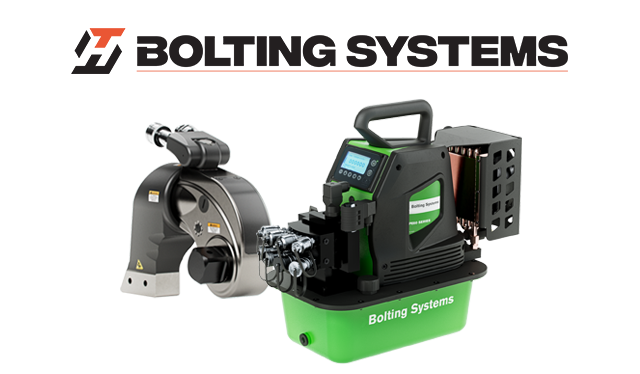Hydraulic force has been used to lift, lower, push and pull large and heavy loads for years. There are multiple effective ways to do it depending on the object, distance of the move, location, and other factors. Manually operated multi-point flow control manifolds and motion controlled synchronized systems are two widely-used options. Here, we’ll take a closer look at these two lifting setups and how they work in the field, compare some critical attributes, and note considerations for incorporating a synchronous system into your lifting repertoire.
The Manually Operated Multi-Point Flow Control Manifold Hydraulic Lifting Process
This method relies on manually-controlled valves on a manifold that have separate flow control valves for each port. The valves are operated by hand with small movement potentially equaling large volume differences, careful monitoring must be maintained by the operator. The unit often includes pressure gauges for monitoring the oil pressure to each cylinder. The basic operation is as follows:
- The pump outlet connects to the manifold port inlet.
- Each flow control valve is connected to its own cylinder with a hose.
- An operator initializes the flow of oil by activating the pump and slowly opening the valves.
- Observers at each cylinder monitor its travel distance and verbally report back to the manifold operator.
- The operator then fine-tunes the valve setting to try and keep consistency at each point creating level movement.
- Once the position is completed the operator shuts the valves and determines if cribbing is needed.

Some Challenges of Manually Operated Multi-Point Flow Control Systems
While this method is effective for many lifting applications, it does have some drawbacks that can make it impractical in some cases. Because each cylinder must be observed individually, a dedicated crew member must be positioned at each cylinder for the duration of the lift. What’s more, all observations and measurements are by eye or rudimentary measuring techniques, which is prone to human error. Single-point pump to cylinder systems would need a valve operator at each pump causing potential for greater inaccuracy. Jobsites are notoriously loud due to generators and pumps, which makes verbal communication difficult or unreliable. Perhaps most risky is the fact that observers must be in close proximity to the live load.
Manually adjusting the valves always happens with a delay, which can result in pressure points, cracks, or unbalancing of the load. Even when the crew is diligent about measurements and communication, the flowpath and resistance of each line can differ, which means different volumes of oil can reach each cylinder, resulting in stroke deviations. By the time that effect is visible and the valve is adjusted, damage may occur, or the lift may require an abrupt stop to avoid it. Either way it slows the job down.
These systems also require multiple components, generators, and multiple workers and sometimes special equipment to transport, unload, and set everything up. Not only does this add time, it takes up space on the jobsite. When schedules and clearance are limited, manual multi-valve systems can be too cumbersome, time consuming or do not have the safety requirements needed.
Hydraulic Lifting with a Motion Controlled, Synchronized System
The principle behind synchronized lifting is closed loop feedback in which sensors at the load or the cylinder send direct feedback to a control unit, which then makes instantaneous adjustments. This virtually guarantees that each lift point is moving with very close tolerance of the others, for an even and smooth lift. Here’s how it works:
- The pump connects to the control unit.
- Position sensors are installed on the load or on the cylinder and connected to the control unit.
- Oil lines are connected from the control unit valve bank to each cylinder.
- An operator sets the lift parameters on the control unit user interface.
- The position sensors continuously transmit signals back to the control unit.
- The unit’s microprocessor calculates needed adjustments to the flow of oil to each point and instantly actuates the integrated flow control valves.
- The operator monitors the lift from the control unit, with no manual observations or adjustments needed.
An innovative example of this type of system is the eSync from Power Team, which features proven motion control and position-sensing technology in a lightweight, portable, compact design. The system controls up to four lift points with 1mm tolerance, and can be linked with additional eSync units for a total of up to 64 points for larger jobs.

Addressing the Challenges of Manually Controlled Lifting
eSync is a fully-functional, closed loop motion control system that’s also compact, portable, and affordable. It eliminates the need for multiple observers because it uses position sensors and a microprocessor to continuously monitor and adjust oil flow to each of the lift points. This motion control technology compensates for the effects of resistance and uneven loading at each point, providing 1mm-tolerance precision.
Another challenge is the growing trend of proposal requests that require synchronized lifting for many jobs from the need to enhance operational efficiency and worker safety. Those without synchronized equipment can’t bid, and risk lost revenue. As this trend continues, it will have a growing impact on companies without access to motion controlled lifting.
A Manually operated multi-point flow control hydraulic circuit or single point system can be a suitable option when lift point precision (i.e., allowable variation in how far each cylinder moves) is less critical. However, it’s important to balance this with safety risks to the crew as they get very close to or under the live load for monitoring. Another factor is the potential risks to the load from reliance on multiple observers and the brief yet significant delays in adjusting oil flow due to verbal communication.
Comparing the Options
Synchronized Lifting with eSync |
Traditional Motion Control Systems |
Manually Operated Multi-Point Flow Control Manifold |
Manual Single Point Systems |
|
Initial investment |
||||
Accuracy / Precision |
||||
Portability |
||||
Synchronization |
||||
Ease of setup |
||||
Ease of transport |
||||
Operator / Team Safety |
The Advantages of Making the Change to Synchronized Lifting
There are multiple options for synchronous lifting on the market today, many of them expensive, large, and with varying degrees of complexity. These can be barriers to entry for companies interested in diversifying their lifting toolbox to stay competitive for RFPs and jobs that require synchronous lifting.
The eSync system is thoughtfully designed to remove barriers and make synchronized lifting equipment accessible to more crews. Major advantages include:
-
Leveraging decades of experience in the hydraulic motion control market, Power Team has combined proven components from its MCS product line to create an economical, portable solution that maintains the same safety features that made Power Team’s synchronous motion control products so widely trusted.
-
Battery-powered portability. eSync is compact, lightweight and now cordless to allow for synchronous motion for almost any application no matter how remote. A fully battery-powered unit runs lifts with no generator or other external power source (a corded version is also available).
-
Crew safety. Because the control unit does the monitoring and adjusting, the crew can stay farther away from the load as it moves.
-
Low damage risk. The unit makes real-time adjustments to keep all cylinders moving within 1mm of each other throughout the lift. This keeps the load evenly supported and level without twisting or adding additional stress to the object.
-
Faster set up. The integrated system has fewer components and a compact, vertical footprint for easy set up. It’s also light enough for two people to unload and carry, which is far faster than hauling a large motion control system into position.
-
High precision. All lifts are held within a 1mm tolerance between points by load position sensors and the on-board microprocessor in the control unit.
-
Pump flexibility. eSync can be used with nearly any existing pump (when equipped with the proper valve), or it can be bundled with a new Power Team pump that’s engineered to function with eSync.
-
Quiet operation. When using the engineered pumps that are offered with eSync, the control logic calls on the pump only when needed. This keeps the jobsite quieter so workers can communicate easier. In addition to less noise, this also decreases the electrical demand on the system and offers a reduction in oil temperature.
-
Scalable. A single eSync unit controls four lift points, and users can easily link multiple additional units for up to 64 total lift points.
-
User friendly. A streamlined user interface makes setting lift parameters and linking eSync units simple.
The Modern, Smarter Way to Lift is Here with eSync
Synchronized lifting offers low-risk, precise lifting that’s safer for your crew and the objects you move. eSync makes it easier to add this essential technology to your services. Download Power Team’s guide to smarter lifting, or contact us to see how eSync can add to your company’s capabilities.











































